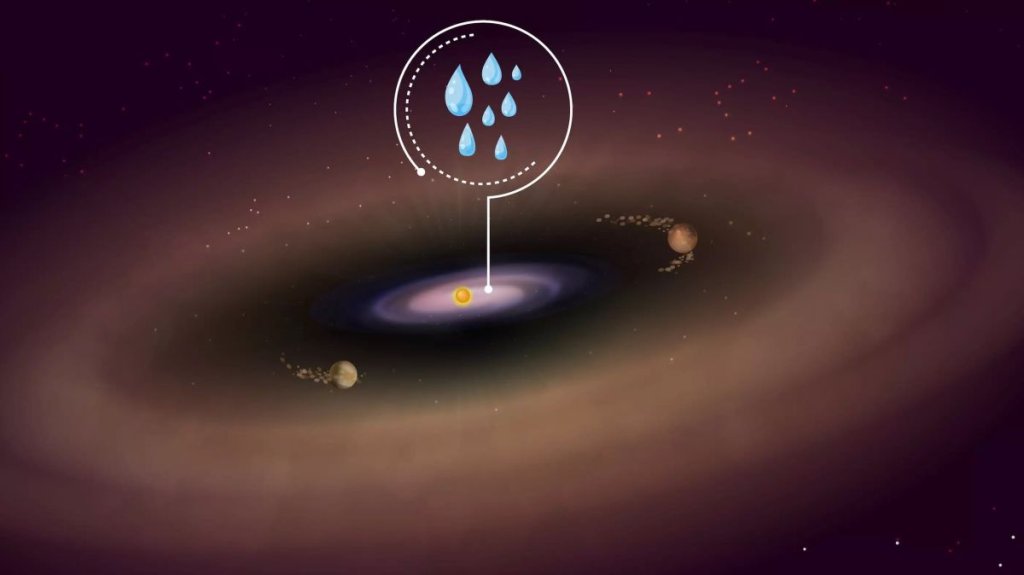
James Webb Space Telescope spies water near center of planet-forming disk in cosmic 1st (Image Credit: Space.com)
Astronomers have for the first time discovered that rocky alien worlds could possess large amounts of water from the moment they form, a new study finds.
Life is found virtually wherever there is water on Earth. As such, the search for potentially habitable exoplanets has mainly focused on hunting for the presence of water.
Previous research suggested that the newborn Earth got a lot of its water from water-bearing asteroids bombarding our young planet’s surface after it formed. Now scientists may have discovered evidence that water could also serve as one of the initial ingredients of rocky planets available at birth.
Related: The strangest alien planets we’ve seen so far

In the new study, the researchers focused on the young star PDS 70, located about 370 light-years from Earth. About three-quarters the mass of the sun, PDS 70 is only about 5.4 million years old, compared to our sun‘s age of about 4.6 billion years.
“PDS 70 is a star similar to our sun, just younger and cooler,” study lead author Giulia Perotti, an astrophysicist at the Max Planck Institute for Astronomy in Heidelberg, Germany, told Space.com. “By observing it, we can trace back how the planets in our solar system formed and what their chemical composition was before they fully formed.”
Using the mid-infrared instrument (MIRI) on NASA’s James Webb Space Telescope, the scientists discovered water near the center of the planet-forming disk of gas and dust surrounding PDS 70, in the form of hot vapor at a temperature of about 625 degrees F (330 degrees C).
“Our result shows that water is present in the inner disk of this iconic system where planets similar to Earth may be assembling,” Perotti said.
In our solar system, this central zone is where Earth and the other rocky planets formed. These new findings suggest that any rocky planets originating in PDS 70’s central zone would draw from a substantial reservoir of water, improving their changes of habitability later on.
PDS 70 is the first relatively old planet-forming disk where scientists have discovered water. Previous research failed to detect water in the central regions of disks of similar age, leading astronomers to speculate that harsh radiation from newborn stars might destroy nearly all water. But these new findings challenge that idea.
“In the PDS 70 system, there is quite a lot of water available during the process of rocky planet formation,” study co-author Thomas Henning, an astrophysicist and managing director of the Max Planck Institute for Astronomy, told Space.com.
So far, the scientists have not actually detected any planets near the center of PDS 70’s disk. Discovering any such worlds requires larger telescopes, such as the Atacama Large Millimeter/submillimeter Array (ALMA) in Chile, Henning noted.
Still, they have detected two gas giant planets farther out, dubbed PDS 70 b and c. The gravitational influence of these giant worlds is actually preventing the influx of ice-rich rock from the outer parts of the disk to its center, Henning said.
One possible explanation for the presence of this water is that it was left over from a water-rich nebula that gave birth to the PDS 70 system, with dust and other material in the planet-forming zone potentially shielding this water from the star’s destructive radiation, the researchers said. Another possibility is that oxygen and hydrogen gas entering the outer rims of the PDS 70 disk might have combined to form water vapor that could in turn drift closer to the star.
Future research could examine more planet-forming disks around young stars to see if PDS 70 is an unusual exception, Perotti said.
The scientists detailed their findings online today (July 24) in the journal Nature.





